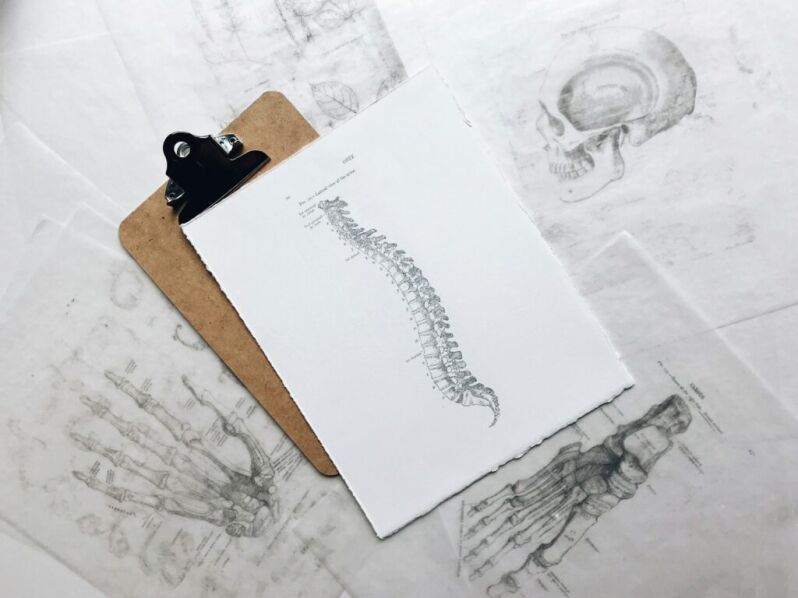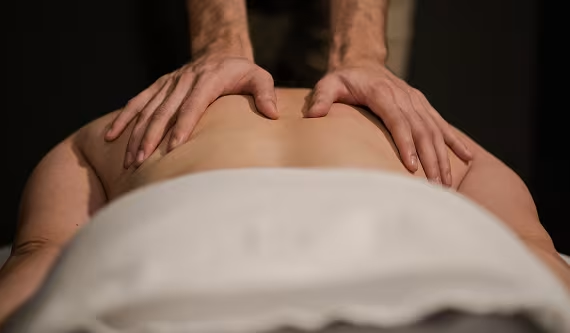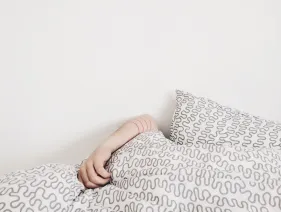Erector spinae pain is one of the most common causes of back discomfort, affecting nearly 80% of people at some point in their lives. Whether you’re lifting weights at the gym, cycling through the River Valley, or playing hockey on the weekend, your back muscles work hard to support movement and maintain posture. The erector spinae muscles, which run along both sides of the spine, are essential for stability, balance, and flexibility. Yet, they are often ignored until tightness, soreness, or injury make everyday activities difficult.
When these muscles become strained or overworked, simple movements like bending down, standing for long periods, or even turning your head can cause discomfort. Left untreated, erector spinae muscles pain can lead to stiffness, reduced mobility, and a higher risk of long-term spinal issues. Understanding what causes this pain, how to relieve it, and ways to strengthen your back can help prevent recurring discomfort and improve performance in both workouts and daily life.
In this article, we’ll explore the role of the erector spinae muscles, common reasons for pain, and effective strategies to relieve tension through stretches and strengthening exercises. If soreness persists, therapeutic massage or deep tissue massage can provide relief and improve recovery. By the end, you’ll have the tools to protect your back, reduce pain, and move more freely.

What Are the Erector Spinae Muscles?
The erector spinae is a group of long, thin muscles that extend along the spine from the lower back to the neck. These muscles play a key role in:
- Supporting the spine during movement
- Maintaining posture while sitting, standing, and exercising
- Helping with bending, twisting, and lifting
Because they are constantly engaged, they are vulnerable to strain, tightness, and fatigue. When these muscles are overworked or injured, pain can range from mild discomfort to severe, movement-limiting stiffness.
Why Do the Erector Spinae Muscles Hurt?
Pain in this muscle group can come from a variety of sources. Some of the most common include:
1. Overuse and Muscle Strain
Repetitive movements or heavy lifting—especially with poor form—can overstress the muscles, causing small tears in the fibers. This often leads to soreness and stiffness.
2. Poor Posture
Slouching at a desk, looking down at a phone for long periods, or lifting incorrectly can create imbalances that put extra strain on the erector spinae. Over time, this leads to tightness and discomfort.
3. Muscle Spasms
Sudden, involuntary contractions can occur when muscles are fatigued or overworked. Spasms may cause sharp pain and limit movement until the muscles relax.
4. Weak Core Muscles
A strong core helps support the lower back. When core muscles are weak, the erector spinae compensate, increasing strain and the risk of injury.
Best Stretches for Erector Spinae Pain
Stretching helps relieve tension and keeps muscles flexible. Try these simple movements to ease pain and improve mobility.
Cat-Cow Stretch
- Start on all fours with hands under shoulders and knees under hips.
- Inhale, drop the belly, lift the chest, and look up.
- Exhale, round the spine and tuck the chin.
- Repeat 10 to 15 times.
This movement increases flexibility and reduces stiffness in the back.
Child’s Pose
- Kneel on the floor and sit back on your heels.
- Extend your arms forward and lower your chest to the ground.
- Hold for 30 seconds to one minute.
A great stretch to relax tight back muscles and relieve tension.
Seated Forward Bend
- Sit with legs extended straight.
- Inhale, lengthen the spine, and exhale while reaching toward your toes.
- Hold for 30 seconds.
This stretch targets the lower back and hamstrings, helping release tension in the erector spinae.
Exercises to Strengthen the Erector Spinae
Building strength in these muscles helps prevent injuries and supports better posture.
Superman Exercise
- Lie face down with arms extended forward.
- Lift arms, chest, and legs off the ground.
- Hold for a few seconds and lower back down.
- Repeat 10 to 12 times.
This movement strengthens the back and improves spinal stability.
Deadlifts
- Stand with feet hip-width apart, holding a barbell or dumbbells.
- Hinge at the hips and lower the weight while keeping the back straight.
- Return to standing, engaging the glutes and back muscles.
- Perform 8 to 12 repetitions.
Deadlifts are one of the most effective exercises for strengthening the entire back.
Bird-Dog Exercise
- Start on all fours.
- Extend the right arm and left leg simultaneously.
- Hold for a few seconds, then switch sides.
- Repeat 10 times per side.
This helps build core stability while strengthening the erector spinae.
When to Seek Professional Treatment
If pain lingers despite stretching and strengthening exercises, professional treatment may be necessary. Several options can provide relief:
Massage Therapy
Massage improves circulation, reduces tension, and promotes healing. Consider:
- Deep tissue massage for targeting deeper muscle layers
- Therapeutic massage for muscle recovery and pain relief
Physiotherapy
A trained therapist can assess movement patterns, provide targeted exercises, and use manual therapy techniques to reduce pain and improve function.
Chiropractic Care
Adjustments can help realign the spine, reduce muscle tension, and alleviate pressure on the erector spinae.
For those in need of treatment, Athlete’s Choice Massage offers specialized services to address back pain and improve mobility.
Preventing Erector Spinae Pain for Long-Term Spinal Health
Maintaining strong and flexible back muscles is essential for preventing discomfort and supporting overall mobility. Incorporating regular stretching, targeted strengthening exercises, and proper posture can significantly reduce the risk of erector spinae pain. However, persistent soreness or stiffness may require professional treatment to address underlying issues and promote long-term relief. Prioritizing spinal health today can help you stay active, move comfortably, and prevent future injuries.




